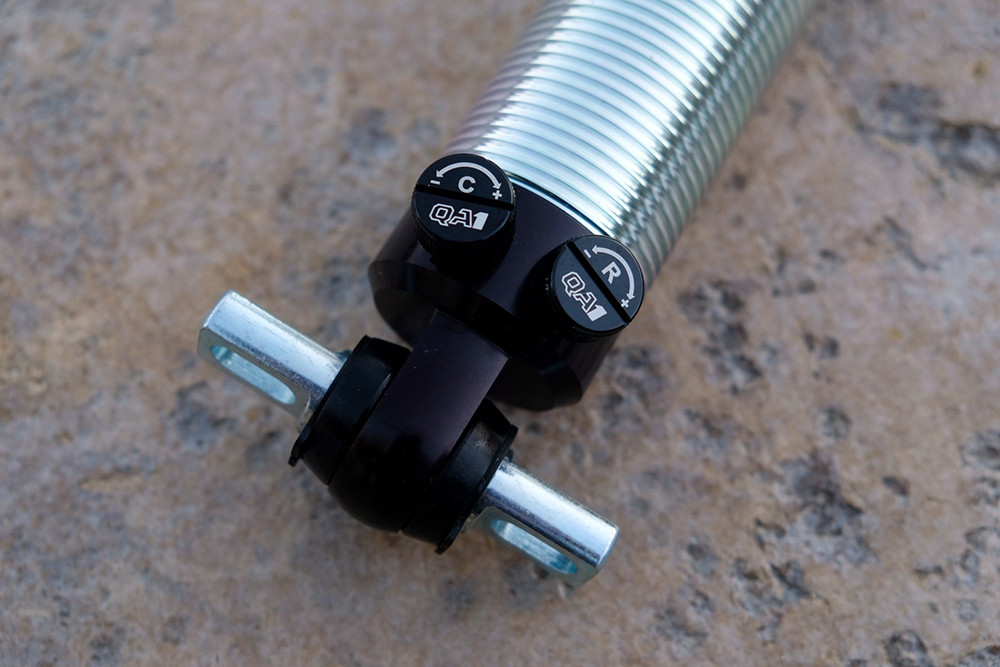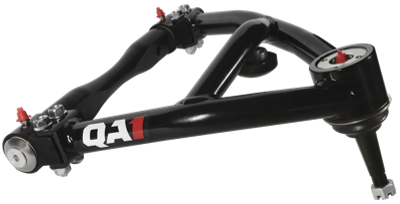 Tech Center" />
Tech Center" />
Tech Center
How to Tune Your Coil-Overs For Street Driving
You just took the leap and installed a set of single- or double-adjustable coil-overs. That’s awesome! You can now instantly alter important characteristics of your car or truck, from ride height to shock valving. You have a ton of flexibility to make your car look and perform the way you want. And better yet, there are a few settings you can tweak you can make right out of the box to get solid baselines and dial in your ride on the street.
Setting your ride height
One of the major benefits of converting to coil-overs is the ability to adjust your ride height. Going up or down with your vehicle (let’s be honest, usually down) is the matter of a few minutes with a spanner wrench and tape measure.
One thing to keep in mind is the range of adjustment. Trying to raise your vehicle too high or slamming it too low will come with negative side effects. If you top out or bottom out your shocks, it doesn’t just compromise ride quality – it can quickly damage your shocks.
Stay within the recommended limits of the coil-over and make sure they work with any related upgrades you’ve made, like tubular control arms or drop spindles. This will ensure you have the travel you need to get a great ride on the street while improving performance over stock components.
Dialing in your shock valving

All QA1 adjustable coil-overs come with baseline valving recommendations. What does that mean? It’s a range of clicks to turn the knobs on your shocks. This will change whether you have single- or double-adjustable shocks.
With single-adjustable shocks, one knob controls both your compression and rebound dampening. Turning the knob clockwise will increase both attributes of the shock. So basically, the more clicks you put into it the more it locks down your suspension. Turning it counterclockwise reduces the dampening of your shock, allowing for freer movement and – usually – a more compliant ride on the street.
With double-adjustable coil-overs, you can control compression and rebound independently. This allows you to really fine tune your ride quality. One big benefit is the ability to turn up the rebound while keeping your compression a little softer. This keeps your car level in the corners by reducing body roll. But still allows your car to comfortably soak up bumps and potholes while you’re cruising down the road. Turning up the rebound in the rear can also help keep the car from nose diving under hard braking.
Don't be afraid to try stuff
You bought adjustable coil-overs for a reason – adjustability! You won’t hurt anything by twisting the knobs and trying different settings. Crank them all the way up and see how it feels. Go super soft and give them a try. Ride quality is very subjective. Something you may find super stiff might be just right for someone else. You may think someone’s car drives like a 3,000-pound marshmallow and they feel like it’s a sports car.
In the end, just try stuff. Keep a little notebook with you and document different settings. If you ever need to get back to a baseline, simply turn the shocks all the counterclockwise and count the clicks. Try each setup for a couple hundred miles and see what you like. In the end, it’s your car and it should drive the way YOU want it to drive.
Common coil-over tips and tricks
- If you feel like your car is very bouncy, you might actually have your valving set too soft – not too stiff. This is the result of your car or truck riding on the springs and not having enough dampening to control the motion of the springs as they compress and extend.
- On double-adjustable shocks, compression is typically set a few clicks softer than rebound. This helps the car soak up imperfections in the road while maintaining a sporty feel in the corners.
- Your new coil-overs may amplify other shakes, rattles and rolls in vehicle. Unless you’ve gone through it top to bottom, there’s a good chance you have blown out bushings or other parts past their prime. New shocks can amplify these issues, but it does not mean anything is wrong with your coil-overs themselves.
- Tune your car to the conditions you’ll drive it in. Doing laps of a glass-smooth parking lot is not the same as rough roads you drive on a regular basis. If you live in the north where there are tons of cracks and road imperfections, you’ll have to set your valving differently than someone who has new pavement everywhere.
- If you’re experiencing consistent issues with ride quality, it’s probably tied to your valving settings. If you occasionally experience sharp clunks or bangs, you’re likely topping or bottoming your shocks out. Check to make sure you have the right setup for your application based on compressed and extended lengths.
Give us a shout if you have questions about your coil-overs.
Our tech team is happy to help you dial in your ride and make sure your car is behaving exactly the way you want it to. Give us a call at 952-985-5675.


